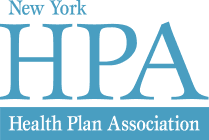Clinical Guidelines
The landmark report from the Institute of Medicine (IOM), “Crossing the Quality Chasm: A New Health System for the 21st Century,” called for our nation’s health care system to be more patient-centered and more systems oriented. It also stressed the need for health care delivery to be more focused on chronic care, more evidence-based, and more reliant on best practices.
Health plans have long embraced this approach to health care, utilizing best practices and clinical guidelines to help physicians and other providers ensure they are providing the most appropriate treatments and care to patients. As medicine is constantly evolving—advances in technology and new research can lead to changes both minor and significant—the definition of best practices and clinical guidelines must also evolve.
Health plans use a variety of nationally recognized proprietary products (i.e. Interqual, Milliman & Robertson) that collect and constantly update guideline criteria. All health plans provide the clinical guidelines and treatment protocols for particular diseases or conditions to those consumers who request this information.
National Guideline Clearinghouse
The National Guideline Clearinghouse™ (NGC) is an on-line, publicly available database of evidence-based clinical practice guidelines and related documents.
The Clearinghouse—principally used by providers, payers, employers and researchers—is designed to be an educational tool, providing aggregate information on evidence-based practices. The database may also be of some general use to patients and their families who seek information on disease/condition and treatment/intervention guidelines.
The NGC is produced by the Agency for Healthcare Research and Quality (AHRQ) in partnership with the American Medical Association (AMA) and the American Association of Health Plans (AAHP) Foundation. The NGC is updated weekly with new content. Key components of the NGC include:
- Standardized abstracts about each guideline and its development.
- A utility for comparing attributes of two or more guidelines in a side-by-side chart.
- Syntheses of guidelines covering similar topics, highlighting the similarities and differences.
- Links to full-text guidelines, where available, and/or ordering information for print copies.
- Annotated bibliographies on guideline development methodology, structure, implementation and evaluation.
